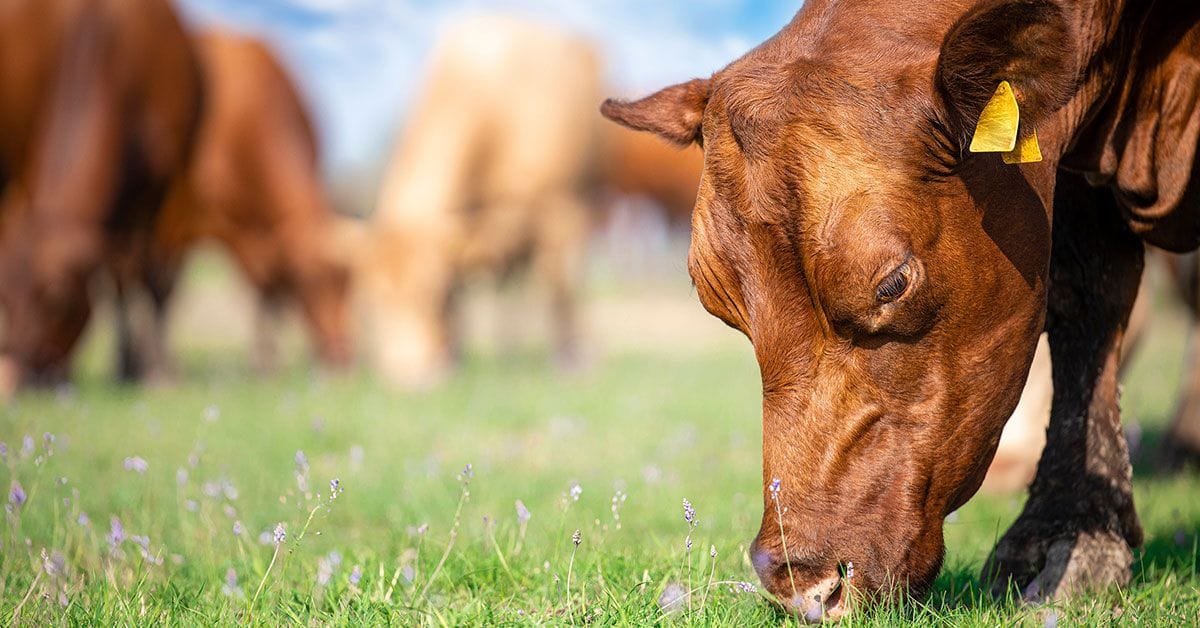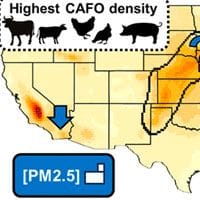A recent study highlights the significant environmental and health impacts of ammonia emissions from concentrated animal feeding operations (CAFOs), revealing the urgent need for accurate emission tracking and effective reduction strategies.

Of all human activities, agriculture is the largest controllable source of ammonia, nitrous oxide, and methane emissions—pollutants that adversely affect air quality, destroy ozone, and add to the global burden of climate change. But the habit of housing livestock in confined feeding operations makes their contribution hard to estimate.
Many intensive agricultural operations have feedlot-confined animals, commonly called concentrated animal feeding operations (CAFO). Despite the growing number of these sites, it is hard to quantify their exact number, size, and location—and that makes it hard to measure and understand their contribution to environmental pollution. Additionally, ammonia emission rates from livestock vary by animal type, population size, and farm management policies. There are practices that can mitigate emissions at farms with lower animal densities, such as sustainable application of livestock waste to fields, but these are less feasible at the industrial scale, and are not typically carried out at CAFOs.
Notably, satellite records show ammonia mixing ratios are rising, in contrast to most controllable air pollutants. Livestock waste is the dominant contributor to ammonia emissions, which are responsible for particulate matter (PM) that affects air quality, and leads to respiratory problems and premature deaths. Emissions from feedlot animals are much higher than those for pasture-raised herds, in part due to greater reliance on manure storage and silage.1
Now, work from a team from California and Washington, D.C. suggests that in agricultural areas where ammonia concentrations and animal density are highest, air quality improvement lags behind the national average.2 The research, published in Environmental Science & Technology, looked at spatial and temporal trends in animal numbers alongside satellite-derived ammonia levels over a 15-year period to 2017, and assessed remotely detected ammonia and the evolving chemical climatology of rural areas in the context of surface measurements of PM2.5 mass and its chemical constituents. The correlation between summertime ammonia and CAFO animal unit density was both positive and significant.

Data Gap: Air Quality Networks Miss Air Pollution from Concentrated Animal Feeding Operations
DOI: 10.1021/acs.est.3c06947
These findings are important, since agricultural ammonia emissions in the US are estimated to cause over 12,000 premature deaths and incur societal costs of around $160 billion every year.3 Additional research shows CAFOs are more common in high-poverty and primarily non-White communities,4 so the pollution they cause may represent an environmental justice issue. Previous work has suggested that for every 10% increase in non-Hispanic Black residents, the odds of exposure to methane emissions from activities such as refineries, landfill, or farming increased by 10%.5 Similar disparities were observed for Hispanic and Native American residents, but not by indicators of socioeconomic status.
Although not directly toxic to humans, methane is co-emitted with other pollutants that threaten health, including PM and volatile organic compounds, which may be associated with neurological damage, birth defects, and cancer.6,7 Importantly, methane emissions have also been underestimated, complicating efforts to develop emission reduction strategies. Research in California shows that dairy operations produce around 65% of methane emissions in the region, with the rest coming from fugitive oil and gas sources.8
To implement effective emission reduction plans requires a detailed understanding of the current magnitude of the problem, and adoption of accurate monitoring and control technologies. Taken together, these findings support the need to develop accurate process-based models to track livestock emissions, and they highlight the need for additional investigation into the meteorological impact of these agricultural emissions.
References
- McQuilling, A. M. and Adams, P. J. Semi-Empirical Process-Based Models for Ammonia Emissions from Beef, Swine, and Poultry Operations in the United States. Atmos. Environ. 2015, 120, 127– 136.
- Burns, A. M. et al. Data Gap: Air Quality Networks Miss Air Pollution from Concentrated Animal Feeding Operations. Environ. Sci. Technol. 2023, 57, 49, 20718–20725.
- Domingo, N. G. G. et al. Air Quality–Related Health Damages of Food. Proc. Natl. Acad. Sci. U.S.A. 2021, 118(20), e2013637118.
- Son, J-.Y. et al. Distribution of Environmental Justice Metrics for Exposure to CAFOs in North Carolina, USA. Environ. Res. 2021, 195, 110862.
- Casey, J. A. et al. Climate Justice and California’s Methane Superemitters: Environmental Equity Assessment of Community Proximity and Exposure Intensity. Environ. Sci. Technol. 2021, 55, 21, 14746–14757.
- Garcia-Gonzales, D. A. et al. Hazardous Air Pollutants Associated with Upstream Oil and Natural Gas Development: A Critical Synthesis of Current Peer-Reviewed Literature. Annu. Rev. Public Health 2019, 40, 283–304.
- Johnston, J. E. et al. Impact of Upstream Oil Extraction and Environmental Public Health: A Review of the Evidence. Sci. Total Environ. 2019, 657, 187–199.
- Schulze, B. C. et al. Methane Emissions from Dairy Operations in California’s San Joaquin Valley Evaluated Using Airborne Flux Measurements. Environ. Sci. Technol. 2023, 57, 48, 19519–19531.
